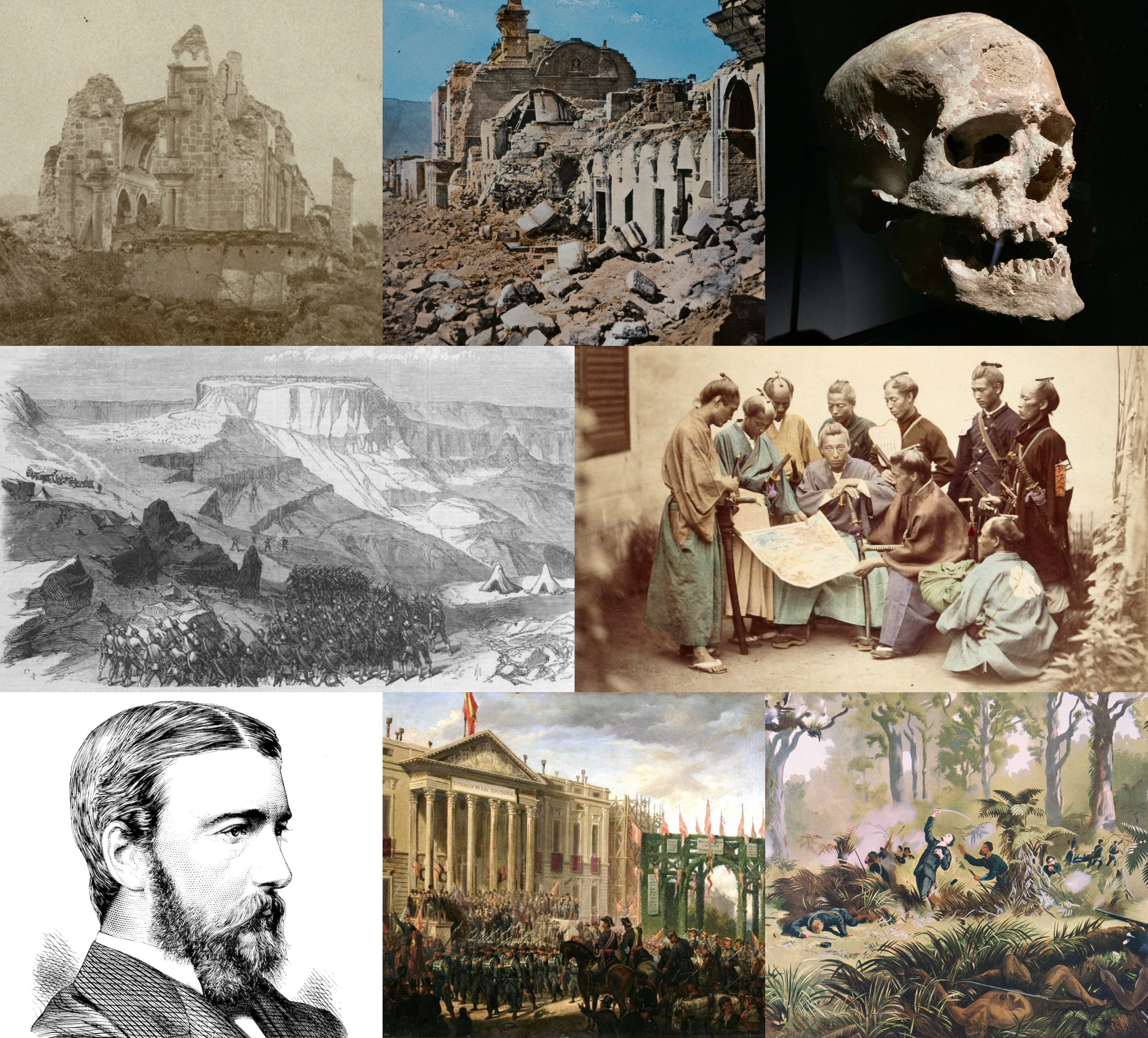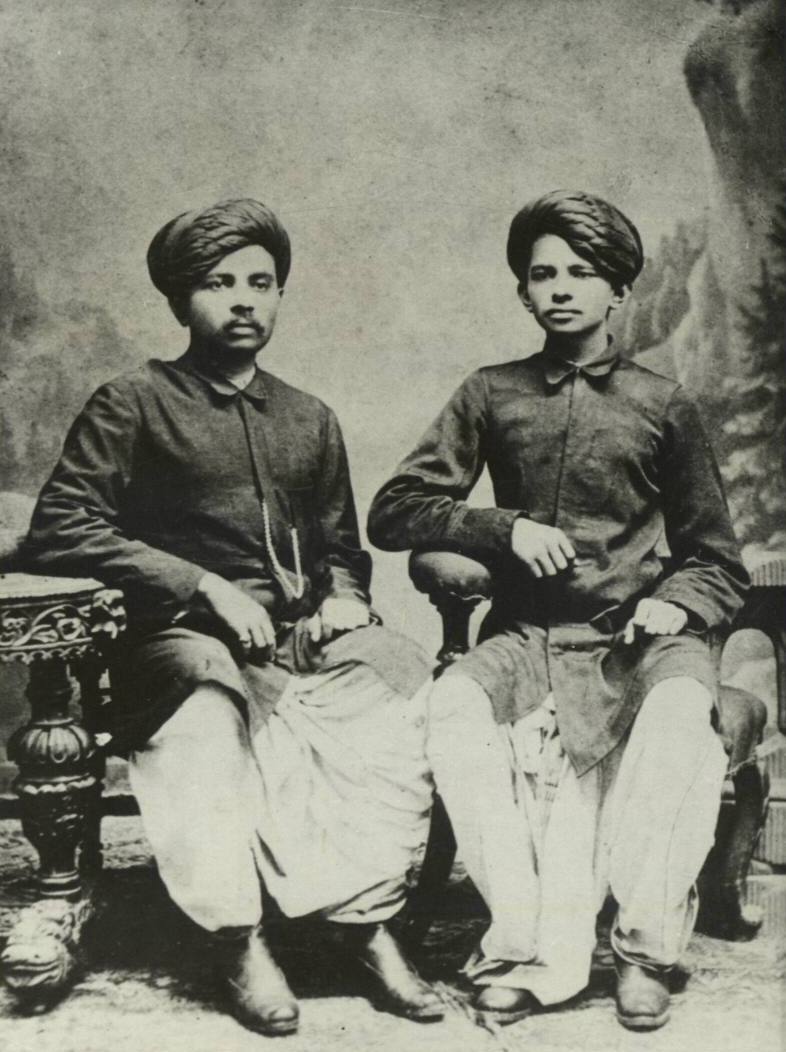|
Ardeshir Godrej
Ardeshir Burjorji Sorabji Godrej (1868–1936) was an Indian businessman. With his brother Pirojsha Burjorji Godrej, Pirojsha Burjorji, he co-founded the Godrej Brothers Company, the precursor of the modern Godrej Group. Early years Ardeshir was born in 1868 as the first of six children to Burjorji and Dosibai Gootherajee. The Gootherajees were a wealthy Parsi people, Parsi family of Mumbai, Bombay (now Mumbai), and Ardeshir's father Burjorji and grandfather Sohrabji dealt in real estate. In January 1871, his father had the family name changed to Godrej. In 1890, Ardeshir married Bachu (Bachubai), who had just turned eighteen. On 25 April 1891, Bachubai and Ardeshir's second cousin Pirojbai Sohrabji Kamdin decided to climb to the viewing platform of the 85-meter high Rajabai Tower. At the top, one or two miscreants accosted them. According to legend, rather than give into their demands, the two good-looking women jumped. Both lost their lives. Ardeshir rarely spoke of his loss, ... [...More Info...] [...Related Items...] OR: [Wikipedia] [Google] [Baidu] |
Businessman
A businessperson, also referred to as a businessman or businesswoman, is an individual who has founded, owns, or holds shares in (including as an angel investor) a private-sector company. A businessperson undertakes activities (commercial or industrial) to generate cash flow, sales, and revenue by using a combination of human, financial, intellectual, and physical capital to fuel economic development and growth. History Medieval period: Rise of the merchant class Merchants emerged as a social class in medieval Italy. Between 1300 and 1500, modern accounting, the bill of exchange, and limited liability were invented, and thus, the world saw "the first true bankers", who were certainly businesspeople. Around the same time, Europe saw the " emergence of rich merchants." This "rise of the merchant class" came as Europe "needed a middleman" for the first time, and these "burghers" or "bourgeois" were the people who played this role. Renaissance to Enlightenment: Rise of ... [...More Info...] [...Related Items...] OR: [Wikipedia] [Google] [Baidu] |
Bombay Explosion (1944)
The Bombay explosion (or Bombay docks explosion) occurred on 14 April 1944, in the Victoria Dock of Bombay, British India (now Mumbai, India) when the British freighter SS ''Fort Stikine'' caught fire and was destroyed in two giant blasts, scattering debris, sinking surrounding ships and setting fire to the area, killing around 800 to 1,300 people. Some 80,000 people were made homeless and 71 firemen lost their lives in the aftermath. The ship was carrying a mixed cargo of cotton bales, timber, oil, gold, and ammunition including around 1,400 tons of explosives with an additional 240 tons of torpedoes and weapons. Vessel, the voyage and cargo The was a 7,142 gross register ton freighter built in 1942 in Prince Rupert, British Columbia, under a lend-lease agreement; the name '' Stikine'' was derived from the Stikine River in British Columbia. Sailing from Birkenhead on 24 February, via Gibraltar, Port Said and Karachi, she arrived at Bombay on 12 April 1944. Her cargo incl ... [...More Info...] [...Related Items...] OR: [Wikipedia] [Google] [Baidu] |
19th-century Indian Inventors
The 19th century began on 1 January 1801 (represented by the Roman numerals MDCCCI), and ended on 31 December 1900 (MCM). It was the 9th century of the 2nd millennium. It was characterized by vast social upheaval. Slavery was Abolitionism, abolished in much of Europe and the Americas. The First Industrial Revolution, though it began in the late 18th century, expanded beyond its British homeland for the first time during the 19th century, particularly remaking the economies and societies of the Low Countries, France, the Rhineland, Northern Italy, and the Northeastern United States. A few decades later, the Second Industrial Revolution led to ever more massive urbanization and much higher levels of productivity, profit, and prosperity, a pattern that continued into the 20th century. The Catholic Church, in response to the growing influence and power of modernism, secularism and materialism, formed the First Vatican Council in the late 19th century to deal with such problems an ... [...More Info...] [...Related Items...] OR: [Wikipedia] [Google] [Baidu] |
Businesspeople From Mumbai
A businessperson, also referred to as a businessman or businesswoman, is an individual who has founded, owns, or holds shares in (including as an angel investor) a private-sector company. A businessperson undertakes activities (commercial or industrial) to generate cash flow, sales, and revenue by using a combination of human, financial, intellectual, and physical capital to fuel economic development and growth. History Medieval period: Rise of the merchant class Merchants emerged as a social class in medieval Italy. Between 1300 and 1500, modern accounting, the bill of exchange, and limited liability were invented, and thus, the world saw "the first true bankers", who were certainly businesspeople. Around the same time, Europe saw the " emergence of rich merchants." This "rise of the merchant class" came as Europe "needed a middleman" for the first time, and these "burghers" or "bourgeois" were the people who played this role. Renaissance to Enlightenment: Rise of ... [...More Info...] [...Related Items...] OR: [Wikipedia] [Google] [Baidu] |
Parsi People From Mumbai
The Parsis or Parsees () are a Zoroastrian ethnic group in the Indian subcontinent. They are descended from Persian refugees who migrated to the Indian subcontinent during and after the Arab-Islamic conquest of Iran in the 7th century, when Zoroastrians were persecuted by the early Muslims. Representing the elder of the Indian subcontinent's two Zoroastrian communities, the Parsi people are culturally, linguistically, and socially distinct from the Iranis, whose Zoroastrian ancestors migrated to British-ruled India from Qajar-era Iran. The word ''Parsi'' is derived from the Persian language, and literally translates to ''Persian'' ().Parsee, n. and adj. – Oxford English Dictionary . oed.com. Retrieved on 2015-03-03. According to the 16th-century Parsi epic '' [...More Info...] [...Related Items...] OR: [Wikipedia] [Google] [Baidu] |
1936 Deaths
Events January–February * January 20 – The Prince of Wales succeeds to the throne of the United Kingdom as King Edward VIII, following the death of his father, George V, at Sandringham House. * January 28 – Death and state funeral of George V, State funeral of George V of the United Kingdom. After a procession through London, he is buried at St George's Chapel, Windsor Castle. * February 4 – Radium E (bismuth-210) becomes the first radioactive element to be made synthetically. * February 6 – The 1936 Winter Olympics, IV Olympic Winter Games open in Garmisch-Partenkirchen, Germany. * February 10–February 19, 19 – Second Italo-Ethiopian War: Battle of Amba Aradam – Italian forces gain a decisive tactical victory, effectively neutralizing the army of the Ethiopian Empire. * February 16 – 1936 Spanish general election: The left-wing Popular Front (Spain), Popular Front coalition takes a majority. * February 26 – February 26 Incident (二・二六事件, ... [...More Info...] [...Related Items...] OR: [Wikipedia] [Google] [Baidu] |
1868 Births
Events January * January 2 – British Expedition to Abyssinia: Robert Napier leads an expedition to free captive British officials and missionaries. * January 3 – The 15-year-old Mutsuhito, Emperor Meiji of Japan, declares the ''Meiji Restoration'', his own restoration to full power, under the influence of supporters from the Chōshū and Satsuma Domains, and against the supporters of the Tokugawa shogunate, triggering the Boshin War. * January 5 – Paraguayan War: Brazilian Army commander Luís Alves de Lima e Silva, Duke of Caxias, enters Asunción, Paraguay's capital. Some days later he declares the war is over. Nevertheless, Francisco Solano López, Paraguay's president, prepares guerrillas to fight in the countryside. * January 7 – The Arkansas constitutional convention meets in Little Rock. * January 9 – Penal transportation from Britain to Australia ends, with arrival of the convict ship '' Hougoumont'' in Western Australia, afte ... [...More Info...] [...Related Items...] OR: [Wikipedia] [Google] [Baidu] |
Mahatma Gandhi
Mohandas Karamchand Gandhi (2October 186930January 1948) was an Indian lawyer, anti-colonial nationalism, anti-colonial nationalist, and political ethics, political ethicist who employed nonviolent resistance to lead the successful Indian independence movement, campaign for India's independence from British Raj, British rule. He inspired movements for Civil rights movements, civil rights and freedom across the world. The honorific ''Mahātmā'' (from Sanskrit, meaning great-souled, or venerable), first applied to him in Union of South Africa, South Africa in 1914, is now used throughout the world. Born and raised in a Hindu family in coastal Gujarat, Gandhi trained in the law at the Inner Temple in London and was called to the bar at the age of 22. After two uncertain years in India, where he was unable to start a successful law practice, Gandhi moved to South Africa in 1893 to represent an Indian merchant in a lawsuit. He went on to live in South Africa for 21 years. Here, ... [...More Info...] [...Related Items...] OR: [Wikipedia] [Google] [Baidu] |
Swadeshi Movement
The Swadeshi movement was a self-sufficiency movement that was part of the Indian independence movement and contributed to the development of Indian nationalism. Before the BML Government's decision for the partition of Bengal was made public in December 1903, there was a lot of growing discontentment among the Indians. In response the Swadeshi movement was formally started from Town Hall at Calcutta on 7 August 1905 to curb foreign goods by relying on domestic production. Mahatma Gandhi described it as the soul of swaraj (self-rule). The movement took its vast size and shape after rich Indians donated money and land dedicated to Khadi and Gramodyog societies which started cloth production in every household. It also included other village industries so as to make village self-sufficient and self-reliant. The Indian National Congress used this movement as arsenal for its freedom struggle and ultimately on 15 August 1947, a hand-spun Khadi tricolor Ashoka Chakra Indian flag wa ... [...More Info...] [...Related Items...] OR: [Wikipedia] [Google] [Baidu] |








